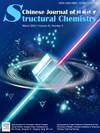揭示了高价WO3在促进尿素助水分解中的吸附作用
IF 5.9
4区 化学
Q1 CHEMISTRY, INORGANIC & NUCLEAR
引用次数: 0
摘要
镍基电催化剂被认为是尿素辅助制氢的一种很有前途的选择。然而,由于d轨道在Ni位点的高占位,抑制了反应物的吸附,从而无法获得满意的尿素氧化反应(UOR)和析氢反应(HER)活性,因此其应用仍然具有挑战性。本文将具有空d轨道的WO3位点引入Ni3S2中,构建双活性位点来调节活性分子的吸附。实验和理论计算表明,电子从Ni3S2转移到WO3形成了具有足够空d轨道的缺电子Ni,从而优化了尿素/H2O的吸附,并调节了尿素中氨基和羰基的吸附行为。因此,Ni3S2-WO3/NF具有1.38 V的极低电位,可达到10 mA cm−2,用于uor辅助HER。这项工作强调了构建协同双活性位点对开发先进的尿素辅助制氢催化剂的意义。本文章由计算机程序翻译,如有差异,请以英文原文为准。

Revealing the reactant adsorption role of high-valence WO3 for boosting urea-assisted water splitting
Ni-based electrocatalysts are considered a promising choice for urea-assisted hydrogen production. However, its application remains challenging owing to the high occupancy of d orbital at the Ni site, which suppresses the reactant adsorption to achieve satisfactory urea oxidation reaction (UOR) and hydrogen evolution reaction (HER) activity. Herein, the WO3 site with empty d orbital is introduced into Ni3S2 to construct dual active sites for regulating the adsorption of reactive molecules. Experimental and theoretical calculations indicate that the electron transfer from Ni3S2 to WO3 forms electron-deficient Ni with sufficient empty d orbitals for optimizing urea/H2O adsorption and tuning the adsorption behavior of the amino and carbonyl groups in urea. Consequently, the Ni3S2-WO3/NF presents a remarkably low potential of 1.38 V to reach 10 mA cm−2 for UOR-assisted HER. This work highlights the significance of constructing synergistic dual active sites toward developing advanced catalysts for urea-assisted hydrogen production.
求助全文
通过发布文献求助,成功后即可免费获取论文全文。
去求助
来源期刊

结构化学
化学-晶体学
CiteScore
4.70
自引率
22.70%
发文量
5334
审稿时长
13 days
期刊介绍:
Chinese Journal of Structural Chemistry “JIEGOU HUAXUE ”, an academic journal consisting of reviews, articles, communications and notes, provides a forum for the reporting and discussion of current novel research achievements in the fields of structural chemistry, crystallography, spectroscopy, quantum chemistry, pharmaceutical chemistry, biochemistry, material science, etc. Structural Chemistry has been indexed by SCI, CA, and some other prestigious publications.
 求助内容:
求助内容: 应助结果提醒方式:
应助结果提醒方式:


